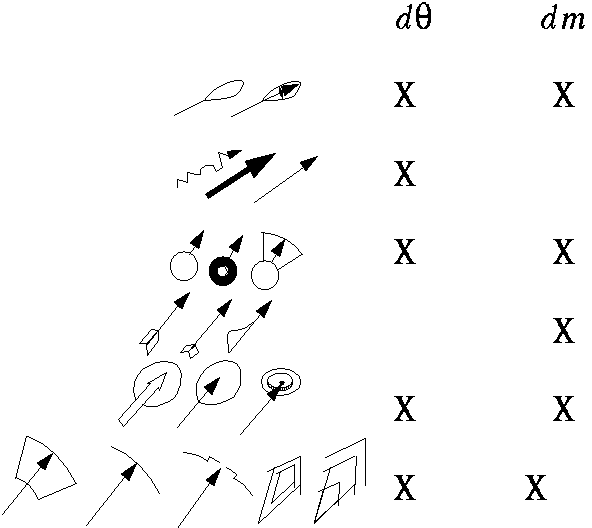 Variety of uncertainty glyphs (5k)
Variety of uncertainty glyphs (5k)
 Comparison of uncertainty glyphs vs wind barbs (40k)
Comparison of uncertainty glyphs vs wind barbs (40k)
We have developed new vector glyphs to visualize uncertain winds and ocean currents. Our approach is to include uncertainty in direction and magnitude, as well as the mean direction and length, in vector glyph plots. Our glyphs show the variation in uncertainty, and provide fair comparisons of data from instruments, models, and time averages of varying certainty. We use both qualitative and quantitative methods to compare our glyphs to traditional ones. Subjective comparison tests with experts (meteorologists and oceanographers) are provided, as well as objective tests (data ink maximization), where the information density of our new glyphs and traditional glyphs are compared. We have shown that visualizing data together with their uncertainty information enhances the understanding of the continuous range of data quality in environmental vector fields.
Correction to illustrate technique in small multiples (ala Tufte), glyphs are shown with traditional arrow glyphs compared to new uncertainty glyphs, C.M. Wittenbrink, A.T. Pang, and S. K. Lodha, IEEE Transactions on Visualization and Computer Graphics, Vol. 2, No. 3, Sept. 1996, pages 266-279. Shown here are Figures 9-14 as intended: pdf or pdf1 or pdf2 .
 Variety of uncertainty glyphs (5k)
Variety of uncertainty glyphs (5k)
 Comparison of uncertainty glyphs vs wind barbs (40k)
Comparison of uncertainty glyphs vs wind barbs (40k)